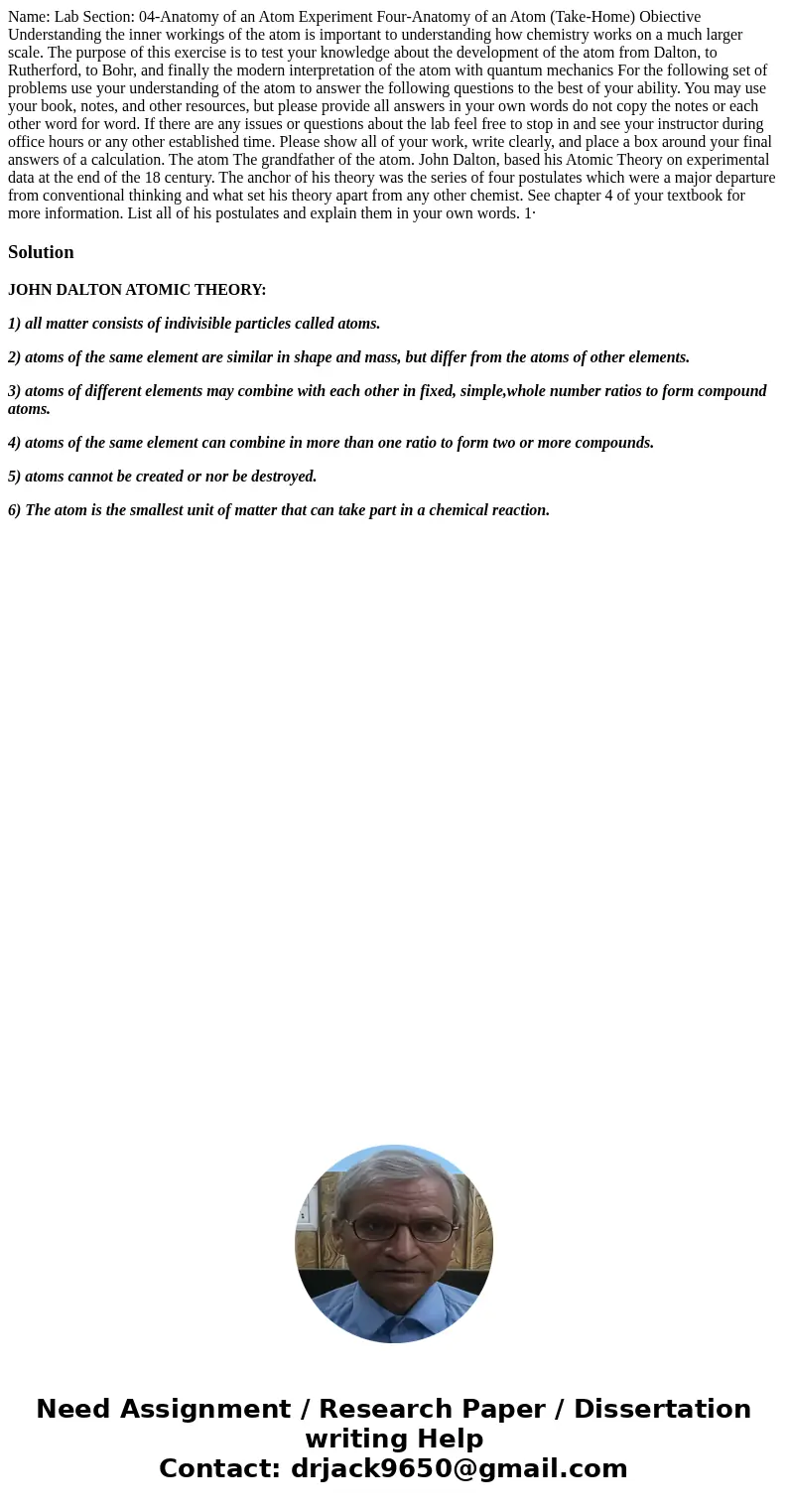Name Lab Section 04Anatomy of an Atom Experiment FourAnatomy
Name: Lab Section: 04-Anatomy of an Atom Experiment Four-Anatomy of an Atom (Take-Home) Obiective Understanding the inner workings of the atom is important to understanding how chemistry works on a much larger scale. The purpose of this exercise is to test your knowledge about the development of the atom from Dalton, to Rutherford, to Bohr, and finally the modern interpretation of the atom with quantum mechanics For the following set of problems use your understanding of the atom to answer the following questions to the best of your ability. You may use your book, notes, and other resources, but please provide all answers in your own words do not copy the notes or each other word for word. If there are any issues or questions about the lab feel free to stop in and see your instructor during office hours or any other established time. Please show all of your work, write clearly, and place a box around your final answers of a calculation. The atom The grandfather of the atom. John Dalton, based his Atomic Theory on experimental data at the end of the 18 century. The anchor of his theory was the series of four postulates which were a major departure from conventional thinking and what set his theory apart from any other chemist. See chapter 4 of your textbook for more information. List all of his postulates and explain them in your own words. 1· 
Solution
JOHN DALTON ATOMIC THEORY:
1) all matter consists of indivisible particles called atoms.
2) atoms of the same element are similar in shape and mass, but differ from the atoms of other elements.
3) atoms of different elements may combine with each other in fixed, simple,whole number ratios to form compound atoms.
4) atoms of the same element can combine in more than one ratio to form two or more compounds.
5) atoms cannot be created or nor be destroyed.
6) The atom is the smallest unit of matter that can take part in a chemical reaction.

 Homework Sourse
Homework Sourse